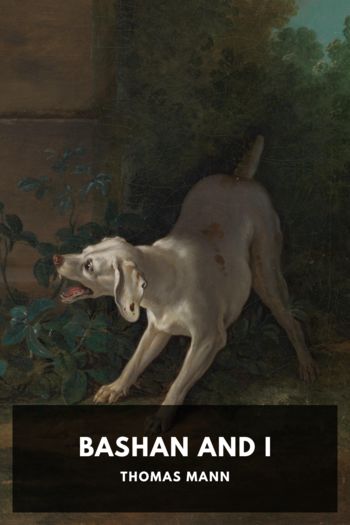Collected Poems Anthony Burgess (best pdf reader for ebooks txt) 📖

- Author: Anthony Burgess
Book online «Collected Poems Anthony Burgess (best pdf reader for ebooks txt) 📖». Author Anthony Burgess
Within the manuscripts used for ‘Belli’s Blasphemous Bible’ is a shorter sequence of works that were seemingly intended to be published for a larger audience, in Playboy magazine. The choice of this magazine is not as surprising as it seems. A year before Burgess started his translations6, an interview with Burgess by C. Robert Jennings appeared in the September 1974 edition of Playboy. Through this, and no doubt through his voracious general reading, Burgess would have been aware that the magazine published contemporaries such as Ian Fleming, Ray Bradbury, Roald Dahl, Norman Mailer and – much later – Vladimir Nabokov. The obscene sonnets intended for Playboy may, accordingly, have been intended as a sampler of the current work in progress. In this respect, it would have been comparable with the sequence that was published in Times Literary Supplement, although the poems selected for inclusion in Playboy were completely different. The intended selection was: ‘Joseph the Jew (II)’ ‘All About Eve’; ‘A Reply’; ‘The First Clothes’; ‘The State of Innocence’ and;‘Joseph the Jew (I)’. Ultimately, it is unclear as to why the sequence never saw publication in Playboy, but that Burgess selected works for inclusion demonstrates that he was seeking wider audiences for his translations beyond specialist literary journals.
Burgess’s verse manuscripts were either typewritten or handwritten. Many of his poems and translations (especially the Belli sonnets) are playfully illustrated, which frequently brings fun to otherwise mechanical transcription and inspection work. He seemingly wrote on any available material, including envelopes, matchboxes, scraps of card, foolscap paper, diaries and large, small, or very small notebooks. Later evidence of digital manuscripts exists in the form of printouts (including sections from Byrne and an unfinished opera about Freud); Burgess possessed an IBM personal computer, bought in 1985. The sonnet addressed ‘To Chas’ was sent to the IABF by email, and the sonnet about Agincourt derived from an image of a typescript posted online by a manuscript dealer. Sometimes, drafts appear in multiple places. Much of the work is neatly typed, especially on note-o-gram business communication forms, such as the manuscript of ‘The trouble is, you see, getting there’. The original copies of the note-o-gram sonnets are available at the IABF, and photocopies are held in the Harry Ransom Center. Burgess’s use of paper suggests a predilection for tactility, playfulness, and a creative use of space, which – regrettably – is not always easy to convey in print. Generally speaking, it seems Burgess preferred pen and paper, even though his later works were written in the era of the PC.
Deciding which poems to exclude has followed a general logic which is open to debate and may be found to be faulty. As a guiding principle, texts have been selected which have been unavailable for a long time, either because they were out of print, or because they were previously unpublished. Generally speaking, verses that appear to be deliberately bad (usually in the service of a novel’s plot) have been excluded. However, some texts in this general category are so entertaining, so rounded, or so creative that they are included here. A notable example of this is the long poem ‘Not, of course, that either of us thought’ from One Hand Clapping (1961), which – while reflecting its fictional writer’s sense of camp drama – shows a remarkable understanding of the excesses of the emerging styles of the time. Some texts, while determinedly possessing a poetic quality, are too undeveloped for inclusion and would make for uneven reading. A number of fragments, most especially from the Enderby novels, appear in an unfinished state, with words like ‘plonk’ or ‘something’ used to describe a poet’s mind at work; many of these are not included. It will be noted that Byrne is not included here, and – arguably – it should be. However, as a major work that is still in print, and one that has recently seen new editions, it is excluded. Readers are strongly recommended to read Byrne immediately after Collected Poems. The same goes for Napoleon Symphony. Likewise, with a handful of notable exceptions (mainly from The Complete Enderby), other works currently in print (usually meaning embedded within novels) are not included. A collection of the plays is expected to be published as a separate edition. Accordingly, extracts from dramatic works are not included here. Whether these omissions detract from the book, and whether the general logic of the edition stands up to scrutiny is, of course, for the reader to decide.
It is difficult to provide a neat summary of the many styles, the linguistic inventiveness, the endless formal experimentation and the bewildering expansiveness of Burgess’s poetic subjects. For all that, some readers may accuse Burgess of burning his poetic candle at both ends. Of course, his detractors were already saying that in the 1970s when he was yet to write long works like Napoleon Symphony, Byrne, ‘Augustine and Pelagius’ and the ‘Essay on Censorship’. And yet, Burgess wrote a lot of very good poetry in between other massive literary, film, and journalistic endeavours. In all of his chosen forms – poetry, music and prose – Burgess’s intention remained (mainly) serious, and the scale impressive.
Either way, Burgess’s poetry was a central part of his career as a best-selling novelist, and his verse was performed on screens and stages the world over. His poetry was seen, heard, read and watched – in cinemas and on television – by millions of people. It may be the





Comments (0)